August Nordin's Swedish American masterpiece
Architectural historian Jonathan Lammers explains the significance of the Swedish American Hall in San Francisco.
-
 Erik O.Lindblom, living cornerstone of the Swedish American Hall. Photo courtesy of Landmark Designation Report: Swedish American Hall.
Erik O.Lindblom, living cornerstone of the Swedish American Hall. Photo courtesy of Landmark Designation Report: Swedish American Hall. -
-
San Francisco recently celebrated the official landmarking of the Swedish American Hall. There is a lot of history and rationale that went into this momentous identification.
-
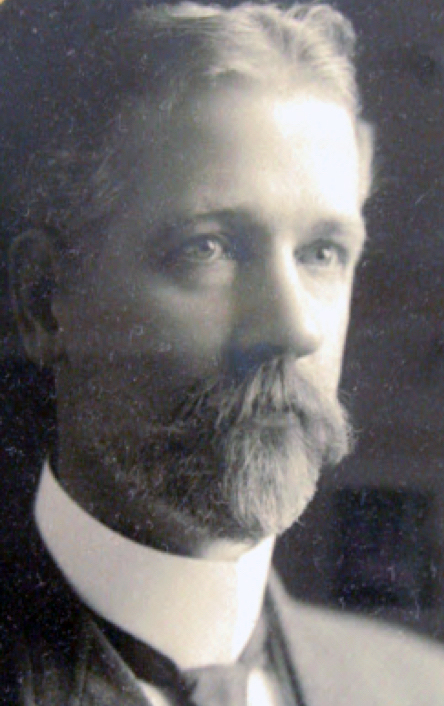 August Nordin, San Francisco Master Architect. Photo courtesy of Landmark Designation Report: Swedish American Hall.
August Nordin, San Francisco Master Architect. Photo courtesy of Landmark Designation Report: Swedish American Hall. -
-
Jonathan Lammers, architectural historian in the City Planning Department, wrote the study* responsible for the landmark of the Swedish American Hall. On June 9, he presented an illustrated talk on this newest San Francisco landmark designed by architect August Nordin, and about the Swedish community that it represented. Among these, the Vasa Order of America and Fylgia Lodge, which sponsored the event, were formed on October 12, 1907, just before the dedication of the hall; Fylgia Lodge has met regularly there ever since.
-
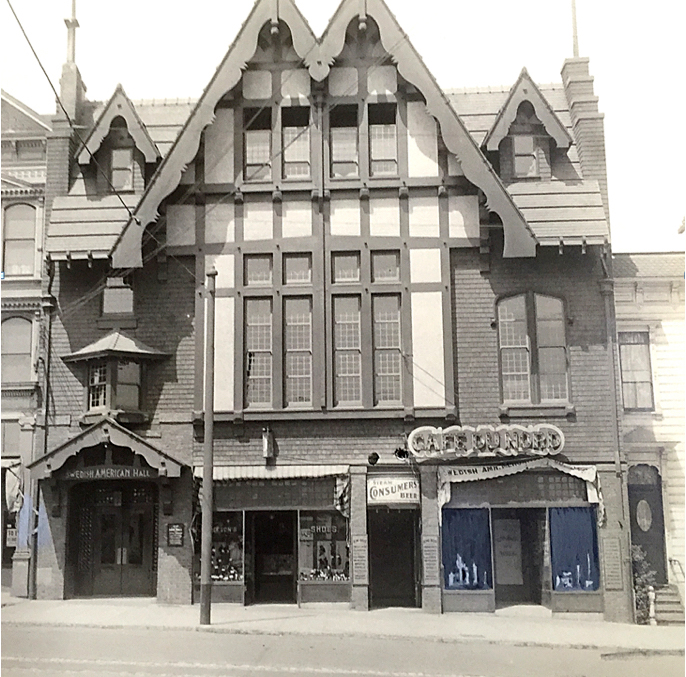 The Swedish American Hall, ca 1910.
The Swedish American Hall, ca 1910. -
Nordin’s design for the façade of the Swedish American Hall is unique in San Francisco. Some elements flow from traditional Swedish design conventions. Other features of the building’s exterior are clearly rooted in Arts and Crafts design as practiced in the Bay Area.
-
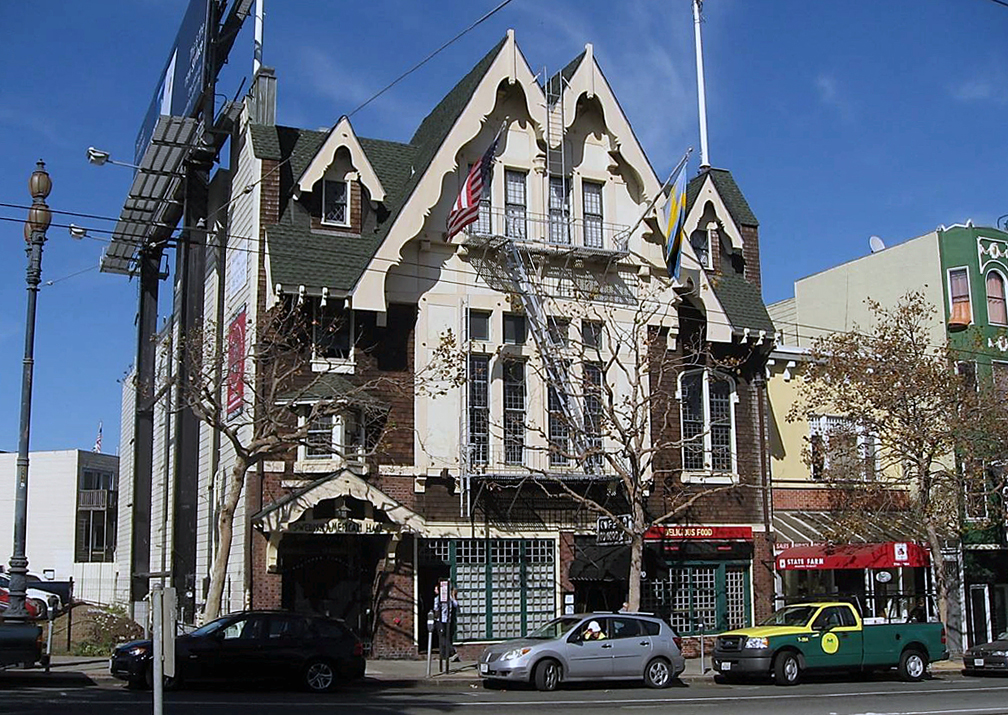 The Swedish American Hall, 2014. Photo: Jonathan Lammers.
The Swedish American Hall, 2014. Photo: Jonathan Lammers. -
Immigrants
Lammers reminded us that the Bay Area’s growing population of Swedes began with Swedish 49ers, during the Gold Rush of 1849. The Swedish Consulate was established here already in May 1850, although the first of several waves of Swedish immigrants to the U.S. began in the late 1860s because of crop failures in Sweden. This wave peaked in the 1880s, when 330,000 Swedes left for America, resulting in the 1890 census reports of almost a half million (478,000) Swedes living in America. By 1870 only 2,000 Swedes lived in in California, but by the turn of the century the number had grown to 14,500. In San Francisco they found a bustling city: wharves packed with ships and blocks full of buildings and factories, a dynamic, diverse and tolerant society for its time. -
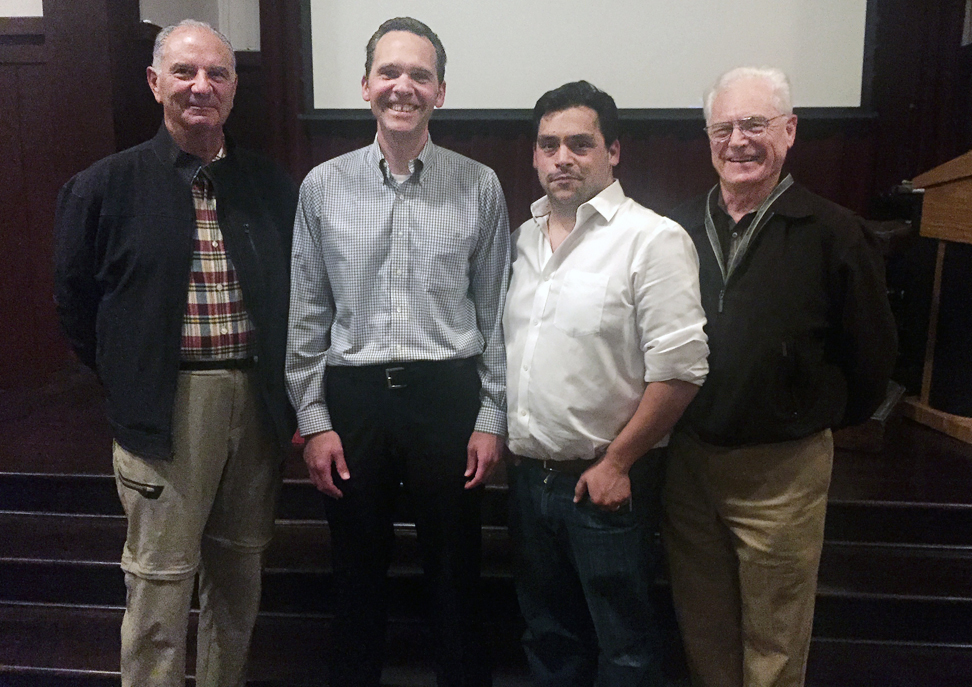 Fred Bianucci (left), Enrique Landa and Ted Olsson (right) gathered after the lecture to congratulate Jonathan Lammers (second from left) for a wonderful talk and a superb landmark study. Photo: Ted Olsson
Fred Bianucci (left), Enrique Landa and Ted Olsson (right) gathered after the lecture to congratulate Jonathan Lammers (second from left) for a wonderful talk and a superb landmark study. Photo: Ted Olsson -
The Scandinavians, mostly living in the populous South of Market area, formed various clubs in the early days. One of the earliest was the Scandinavian Society of San Francisco, established in 1859 for the “welfare and kinship of emigrants from Sweden, Norway and Denmark.” In addition to meetings, theater, dances and picnics, this group also celebrated a Midsummer festival. A claim in 1874 mentioned the group had some 400 members and $30,000.
-
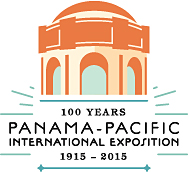 Panama Pacific International Exposition 100 years logo.
Panama Pacific International Exposition 100 years logo. -
The Swedish Society
The Swedes themselves had many organizations, brotherly and sisterly, political, dramatic, musical and more. The Swedish Society of San Francisco (Svenska Skällskapet, 1875) is descended from the Original Orpheus Singing Club (1873). Now it's the oldest Swedish organization in northern California. The society originally had singers as preferred members but became a men’s mutual benefit club with an extensive library. -
The Swedish Society was but one, though the most prominent, of Swedish clubs by 1894. They advertised their special events in both Swedish and English newspapers. One such ad that Lammers found was for their 21st annual picnic at Shell Mound Park in the reliably sunny East Bay, on May 20, 1894. It was obviously important for them to sustain their own traditions, yet the date and event are remarkable because a week earlier, they would have been celebrating with all Swedes throughout the entire region Sweden Day on May 14, 1894 at San Francisco’s first world’s fair, the Midwinter Fair in Golden Gate Park, even though this day was not the summer solstice. This fair was an outgrowth of Chicago’s world’s fair of 1893, where Sweden had erected an ornate and imposing building. San Francisco’s fair drew millions of visitors from all surrounding areas.
-
Swedish churches
Equally important as the clubs to the local Swedish community were the establishment of its various churches, all south of Market Street. It must be remembered that during this immigration period, the Lutheran Church of Sweden was Sweden’s official religion. As in the history of the U.S. itself, many Swedes left their home country for religious liberty. So, there were quite a few Swedish Christian denominations. -
Among the Swedish churches, only the beautiful new Swedish Evangelical Lutheran Ebenezer Church (1884), designed by August Nordin, survived the earthquake and fire. At the corner of Dolores and 15th streets, it was in what was to become the new heart of the extensive Scandinavian community. Later many other Scandinavian churches were located in this neighborhood. Lammers showed photos of some of these buildings, still standing today.
-
Vestkusten “The West Coast”
Another venerable Swedish institution was the establishment of the local Swedish newspaper, Vestkusten (1886), which began as a newsletter of Ebenezer Church. It became secular under Alrik Spencer, and was acquired by his employees Ernst Skarstedt and Alexander Olsson in 1894, in time for San Francisco’s first of three world’s fairs. Reporting more than 6,000 Swedish participants, Vestkusten claimed that Sweden Day marked “the first time on the Pacific Coast that Swedish people gathered in such great numbers to celebrate.” By 1897 Olsson became sole owner, publisher and editor of the paper, and it became the paper of record for Bay Area Swedes. Olsson also served as president of the Swedish Society from 1903-1905. -
SAPL and Midsummer
The city’s first world’s fair was very important for strengthening the regional Swedish community and establishing two other institutions. An outgrowth of the organizing committee (for the 1894 world’s fair) was the founding of the Swedish-American Patriotic League (SAPL) — heavily promoted by Alexander Olsson in Vestkusten — which would provide a central organization to promote similar events. Initially, the group consisted of 26 delegates from 10 organizations, of which the Swedish Society was the oldest and largest. -
While Midsummer had been celebrated locally for many years, it was the obvious choice of a theme for Sweden Day, May 14, 1894, at that fair. However, the Swedes so enjoyed coordinating and collaborating, that they institutionalized both the collaboration and the festival. It marked the occasion when the SAPL solidified the principal responsibility of its president: to annually produce the local Swedish Midsummer, which is the oldest in the U.S.
-
The league was also instrumental in forming the Swedish-American Hall Association, incorporated in 1898 and comprised of members of various Swedish societies in San Francisco and Alameda County, including the new Swedish Society of Oakland, formed in 1901 as Branch No. 1 of the Swedish Society of San Francisco.
-
Scandia Hall
Long before the earthquake and fire, the Swedes had dreamed of having their own hall. In April 1904 the Swedish-American Hall Association celebrated the opening of their newly leased Scandia Hall, a two-story building at 161 City Hall Avenue, across from the new City Hall that was under construction. Newspapers reported that after the official dedicatory program the Swedes enjoyed themselves at various booths featuring tombola and a gallery of art by many local Scandinavians. Each evening that week was scheduled with interesting programs. -
This hall, typical of many such buildings developed to lease or rent to organizations, would become the home of SAPL and of the Swedish Society with its library (“begun in 1877 with a handsome $500 appropriation to purchase books”) of several thousand books and periodicals in Swedish.
-
In April 1906, fires resulting from the city’s worst earthquake destroyed gas and water lines, and most of the city. City Hall and Scandia Hall burned. Most San Franciscans were displaced and on relief; some moved across the bay or left the area. While numerous American insurance companies defaulted on their coverage, the insurance companies in Sweden honored all their claims. And amidst this turmoil, the Swedes persisted in their dream and plans for their own community center.
-
Swedish American Hall
While San Francisco smouldered and hauled away rubble, like a phoenix — the symbol of the city — it regenerated from flames as citizens dreamed of replacing the ruins with an even greater city. Within three months of the disaster, businessman Reuben Hale was again challenging the city to host a world’s fair and the Swedes were dreaming big. -
Now the oldest, largest, and most financially stable of the Swedish organizations, with $25,000 on deposit and still available, the Swedish Society began looking for a site for a new hall. In the interim the Society met at Ebenezer and as a mutual benefit society extended aid to all their members; it did not lose any. In June the building committee agreed to purchase the 50-foot lot at 2174 Market Street near Sanchez.
-
Lammers described the former property owner of their prospective site. She was the wealthy Elise Drexler, listed in the 1907 City Directory as “a widow and capitalist” who owned various large buildings in the city. An adamant temperance advocate who did not allow liquor on any of her properties, she sold two lots on upper Market Street to the society for their new hall, as recorded in the newspaper on September 12, 1906.
-
As important as the building was for the community, the building could never have been erected without the financial backing of Erik O. Lindblom, who, even though not a member of the society, loaned it $40,000. He made his fortune as one of the “Three Lucky Swedes” who struck it rich mining in Nome, Alaska, and then invested in the Bay Area. He created the Swedish-American Bank and invested in Berkeley’s Claremont Hotel.
-
Thanks to Lindblom’s loan the Swedish Society was able to build their distinctive building. Lindblom, the “living cornerstone,” was made an honorary member of the society at the banquet following the laying of the cornerstone on July 27, 1907. The building was completed and opened for business later that year.
-
For the cornerstone ceremony, Swedes gathered in the afternoon several blocks away at the new Ebenezer church. Marching along the streets behind an orchestra, they arrived at nearby Veterans Hall on Duboce Avenue, where the United Singers of the Pacific Coast were holding their convention, and together they all marched back to the new structure on Market street between Church and Sanchez streets.
-
From its first days, the hall fulfilled its purpose as a meeting place for all Swedish and Scandinavian organizations. Early photos showed commercial stores flanking the basement Café Du Nord, with the entrance for the hall to the left. The interior photos of the early hall show how well it has been preserved: It only differed from today in the style of electric lamps and folding chairs; however, the traditional ritualistic thrones are still there from its earliest days.
-
Estimates of large scale immigration during the decades on either side of the turn of the century indicate that 150,000 Scandinavians settled along the Pacific Coast (p.46). They worked in their traditional industries: lumber, shipbuilding, fishing and construction. The massive rebuilding of San Francisco following the quake transformed many carpenters and masons into contractors. “In California," according to Lammers, "the Swedish population nearly doubled during the first decade of the 20th century, rising from approximately 14,500 to 26,000 persons during the first decade.”
-
Given the presence of existing institutions that survived the fire such as Swedish Ebenezer and Danish St. Ansgar’s Lutheran churches, it was natural for many displaced Scandinavians to relocate to the area, spared through heroic firefighting efforts which confined the conflagration to the blocks east of Dolores Street. The Vestkusten newspaper likewise moved to the area shortly after the 1906 earthquake. Publisher Alexander Olsson purchased a house at 30 Sharon Street, converting the lower level to accommodate offices and printing presses. The paper would remain at this address until 1928, when new office space was acquired at 253 Church Street.
-
August Nordin
The Swedish Society hired the prominent Swedish-born San Franciscan architect August Nordin (1869-1936) to design a distinctively Swedish building for their iconic hall. He had immigrated to the U.S. in 1891 when he was 22 years old. He obviously had good training and aptitude in Sweden, but started in San Francisco — as did many Swedes and Scandinavians — as a carptenter and graduated with skills to become a licensed architect. By 1899 he opened his office in San Francisco and a year later his office was located at 1926 Market Street, just a couple blocks from the site of the future hall. -
Lammers showed many of Nordin’s buildings as they exist today. Curiously, New Era Hall (p.39) was built earlier the same year as and across the street from the Swedish-American Hall, but it is not nearly as distinguished as the SAH. It was amusing, as Lammers noted, to imagine Nordin walking back and forth across the street to see how his two crews were progressing on his designs.
-
In a 1910-1915 view of the hall, Lammers was able to show the basement Café Du Nord. And ads from a page of Vestkusten [p.48] show how many Swedish businesses were clustered around the central hall. In the September 3, 1908 edition of Vestkusten, Café Du Nord advertised itself as a first-class bar and grill. Also advertised was the Swedish-American Mercantile Company, selling wines and spirits in one of the street-level stores in the building. A final photo from the telephone directory during the fair listed how many other Swedish organizations were clustered in the neighborhood, including the Swedish Consulate and the Swedish-American World’s Fair League, both at the hall.
-
Panama-Pacific International Exposition, 1915
Lammers concluded his talk by discussing San Francisco's second world’s fair and the Swedes' role. He began with some general photos to orient us: of the ornate Swedish building at Chicago’s Great Columbian Exposition of 1893, much of which was transplanted to San Francisco the following year as our Golden Gate Midwinter Fair in Golden Gate Park. Then followed photos from the site selection of Sweden’s pavilion and the actual groundbreaking ceremony, which was attended by many local Swedes. Some local fundraising was needed, "but the Swedish government was appropriating $160,000 for construction of the pavilion. Ferdinand Boberg of Stockolm, architect of the Malmö Exhibition of 1914 was engaged to design the building, with August Nordin serving as the supervising architect on site.” -
Lammers explained that Nordin was a member of the Swedish Society of San Francisco and served on the Swedish Exhibition Committee in preparation for the 1915 Panama Pacific International Exhibition where it was reported that his practical ideas were repeatedly adopted at meetings. He also oversaw the onsite construction of the Swedish building for Exhibition and was lauded for his ability to overcome numerous difficulties. At the time it was noted Nordin had already designed "no fewer than 300 buildings since he belonged to our society [the Swedish Society], among which are several major hotels and residences for some millionaires."
-
As described by a contemporary reviewer, the Swedish Pavilion was built of "gray stone in the style of a country manor in the 16th century, with a tower reminiscent of an old church in Dalecarlia. The famous design of the three crowns, which may be seen everywhere in Sweden … has been used effectively for a broad stone frieze running at the base of the tower, as well as for interior decorations."
-
Based on the Official Swedish Catalogue produced for the fair, the Swedish Hall featured a number of large rooms where visitors could see examples of work by various Swedish companies and artists, as well as learn about Sweden’s culture, natural resources and industry. A Sweden Week was held at the fair from June 20-26, with activities that included "motion pictures from Sweden, a Midsummer’s Eve presentation, and a parade from Van Ness Avenue to the fairground." The Swedish Singing Society of San Francisco also arranged a singing festival during the exposition featuring the United Swedish Singers of the Pacific Coast, described as "one of the greatest efforts ever made by Swedish organizations in the United States."
-
There were photos of the workers hauling materials and the finished building, one of opening day with the courtyard packed with people, and a colored postcard commemorating views of the fair. A page from the Official Swedish Catalogue listed the exhibits in the main hall with a layout of the floor plan for the building. In his research of the exhibits, Lammers discovered that August Nordin was not the only member of his family recognized for his contributions to the P.P.I.E. — his sister, Alice, was awarded a silver medal at the fair for her sculpture of a Fisherman’s wife.
-
There were also photos of the interior of the pavilion, including some from Sweden’s galleries at the Palace of Fine Arts. Enlarging a site plan of the fair, Lammers helpfully pointed out the building’s location on the Avenue of the Nations, across from Canada’s Pavilion and between those of Bolivia and the U.S. territory of the Philippines. On a current map, he pointed out the approximate location of the pavilion: within the Presidio and the new freeway ramp to the Golden Gate Bridge.
-
Throughout 1915, the Swedish American Hall received numerous Swedish visitors, and according to a golden jubilee history, "Banquets and festivities of all kinds were frequent, and it might not be too boastful to say that all citizens of San Francisco of Swedish birth or descent, whether members of the Swedish Society or not, pointed with a great amount of pride to the beautiful building at 2174 Market Street." An important outgrowth of the fair was continued fundraising efforts by the Swedish American Patriotic League to purchase Sveadal, a recreational and retirement facility located on 110 acres in Uvas Canyon near Morgan Hill. The land was purchased in 1926 and continues to be used today. (Lammers, p.56)
-
Two last photos were shared of the local Swedish community, showing its vibrancy at the time. First was a picture of Jenny Lind Hall at 2229 Telegraph Avenue, Oakland, erected in 1915. More typically American than its San Franciscan counterpart, the Oakland edifice was constructed with a $16,000 loan, which was paid off only 10 years later. The last picture showed an image of the building today, now a Buddhist temple.
-
Finally, it must be noted that there is good news following the landmarking of the Swedish American Hall: Nordstjernan is publishing a book in English, Swedish Architects in the USA, 1846-1930. This comprehensive compilation is based upon years of research by Göran Rygert. I look forward to learning much more about Nordin but most appreciate that this puts his work in perspective of all his fellow Swedish-born architects, who distinguished themselves here and left their mark for the benefit of all Americans.
-
By Ted Olsson
San Francisco -
Footnote:
Lammers, Jonathan. “Swedish American Hall Landmark Designation Report, May, 2015” — a superb report on the man, the masterpiece, the Swedish community and San Francisco. Available at: http://www.sf-planning.org/ftp/files/Preservation/landmarks_designation/HP_SwedishAmericanHall_DesignationReport_FINAL.pdf -
-
